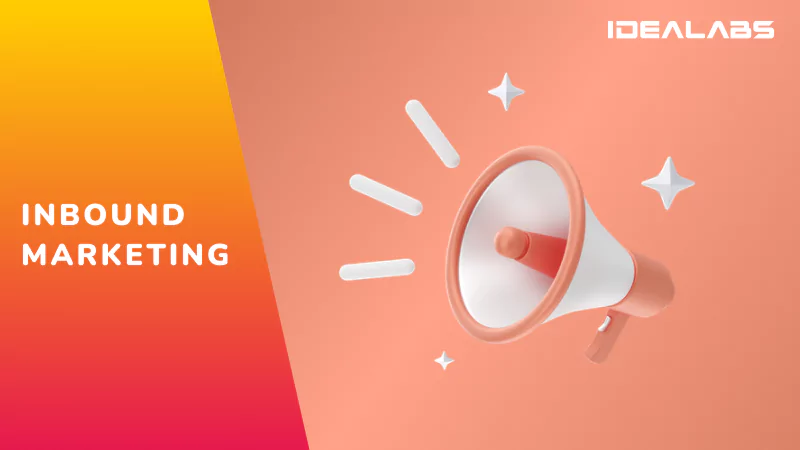Inbound marketing is a modern approach to attracting and engaging potential customers. Unlike traditional marketing methods that involve pushing messages to a wide audience, inbound marketing focuses on drawing customers to your business through valuable content and experiences. This strategy aims to build trust, provide value, and ultimately convert leads into loyal customers.
What is Inbound Marketing?
Inbound marketing is a method that uses content and interactions to attract potential customers to your business. Instead of interrupting people with ads or cold calls, inbound marketing aims to attract customers by providing content and experiences that are relevant and helpful to them.
The goal of inbound marketing is to attract, engage, and delight customers. It’s about creating meaningful relationships and delivering value that encourages people to choose your brand over competitors. This approach is often more cost-effective and sustainable compared to traditional outbound marketing methods.
How Inbound Marketing Works
Inbound marketing works through a series of steps designed to attract and nurture potential customers. These steps are typically broken down into four main stages: attract, convert, close, and delight.
1. Attract
The first step in inbound marketing is attracting the right audience. This involves creating and sharing content that is relevant to your target audience. Common methods include:
- Blog Posts: Writing informative and engaging blog posts that address your audience’s pain points and interests.
- Social Media: Sharing content on social media platforms to reach and engage with potential customers.
- Search Engine Optimization (SEO): Optimizing your website and content to rank higher in search engine results and drive organic traffic.
By providing valuable content, you attract visitors who are interested in what you offer and who are more likely to become leads.
2. Convert
Once you have attracted visitors to your website, the next step is to convert them into leads. This involves capturing their contact information and nurturing them through the sales funnel. Methods to convert visitors include:
- Calls-to-Action (CTAs): Including clear and compelling CTAs on your website and content to encourage visitors to take action, such as signing up for a newsletter or downloading a free resource.
- Landing Pages: Creating dedicated landing pages that offer something of value, such as an eBook or a free trial, in exchange for contact information.
- Forms: Using forms to collect information from visitors who are interested in learning more about your products or services.
The goal is to turn interested visitors into leads by encouraging them to provide their contact details.
3. Close
The closing stage focuses on converting leads into customers. This involves nurturing leads through personalized communication and providing additional value. Common techniques include:
- Email Marketing: Sending targeted and relevant emails to leads based on their interests and behaviors.
- Lead Scoring: Using lead scoring to prioritize leads based on their engagement and likelihood to purchase.
- Sales Automation: Implementing sales automation tools to streamline and personalize the follow-up process.
Effective closing strategies help turn interested leads into paying customers.
4. Delight
The final stage is to delight and retain customers. Happy customers are more likely to become repeat buyers and advocates for your brand. Techniques to delight customers include:
- Customer Support: Providing excellent customer support to address any issues and ensure satisfaction.
- Feedback and Reviews: Encouraging customers to provide feedback and reviews, which can help improve your products and services.
- Loyalty Programs: Offering rewards or incentives to encourage repeat purchases and customer loyalty.
By focusing on delighting your customers, you create lasting relationships and build brand loyalty.
Why Inbound Marketing is Important
Inbound marketing is important because it offers several key benefits:
- Cost-Effective: Compared to traditional outbound marketing, inbound marketing can be more cost-effective. By creating valuable content and optimizing your website, you can attract and engage customers without spending heavily on ads.
- Builds Trust: Inbound marketing focuses on providing value and building trust with your audience. By offering useful content and engaging experiences, you establish credibility and foster strong relationships with potential customers.
- Sustainable Growth: Inbound marketing strategies, such as SEO and content marketing, can drive sustainable, long-term growth. By continually attracting and nurturing leads, you create a steady stream of potential customers.
Conclusion
Inbound marketing is a powerful approach that focuses on attracting, engaging, and delighting customers through valuable content and experiences. By implementing inbound marketing strategies, businesses can build trust, create meaningful relationships, and achieve sustainable growth. If you’re looking to attract more customers and drive better results, inbound marketing offers a strategic and effective solution.
At IdeaLabsLk, we specialize in helping businesses develop and execute inbound marketing strategies that drive success. Our team of experts can assist you in creating valuable content, optimizing your website, and implementing effective lead generation techniques. Let us help you harness the power of inbound marketing to achieve your business goals.

